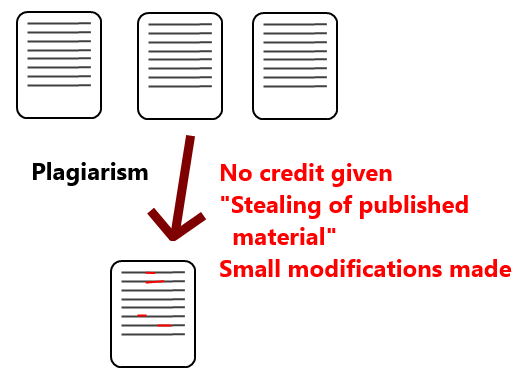 |
| Lord, Carrot. "Example-of-Article-Plagiarism-Diagram". 18 January 2013 via Wikimedia Commons Creative Commons Attribution-Share Alike 3.0 Unported |
Original Source:
"Parents seeking exemptions are more likely to be White and of higher socioeconomic status and to be skeptical of the government and of the pharmaceutical medical industry. Parents who exempt are more likely to have concerns about vaccine safety and adverse effects, particularly if their health care provider shared these concerns. Exemption rates are also associated with state laws and school administrative policies: states in which it is easier to file an exemption have higher exemption rates than states in which it is harder to do so, and this, in turn, is associated with higher disease risk. Epidemiologically, higher exemption rates are associated with lower vaccination rates and therefore higher individual risk of contracting disease and higher community outbreak risk."
Reference:
Wang E, Clymer J, Davis-Haynes C, Buttenheim A. Nonmedical exemptions from school immunization requirements: a systemic review. Am J. Public Health. 2014; 104(11): 62-84
My Paraphrase:
Parents that exempted their children from vaccinations, more than others, tended to be White and have a different wealth status. These individuals also seem to be unconvinced of the government and medicinal therapeutic industry. They are more likely to have uncertainty about the issuing of vaccine and their unfavorable effects, specifically if these individuals are informed about them from their health care provider. In relation to state laws and the different school policies, states that have more lenient exemption laws tend to have higher exemption rates than states that have stricter laws. The higher exemption rates are related to higher risks of children being sickened by diseases. Speaking in terms of hygiene and health, these high rates of exemptions are linked to lower rates of vaccinations. Consequently, this puts children at higher risk to acquire diseases, ultimately putting the community around them at higher risk to have an outbreak spread.
No comments:
Post a Comment